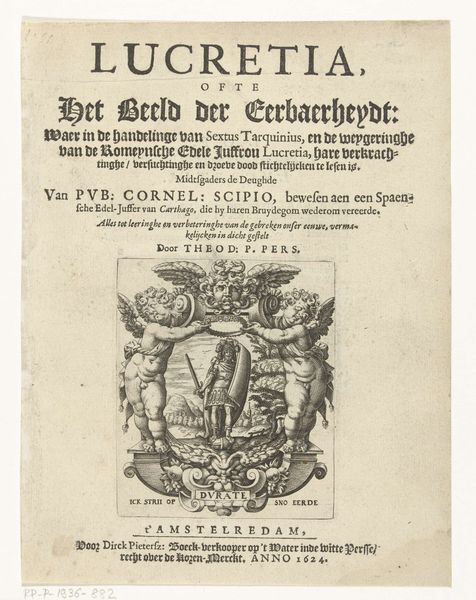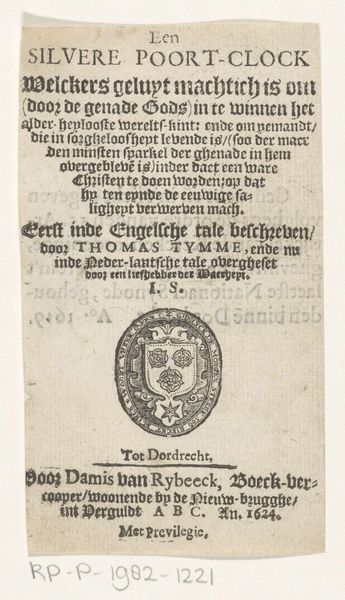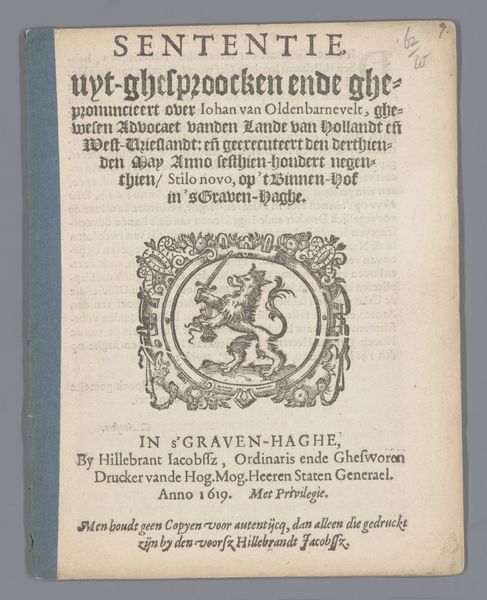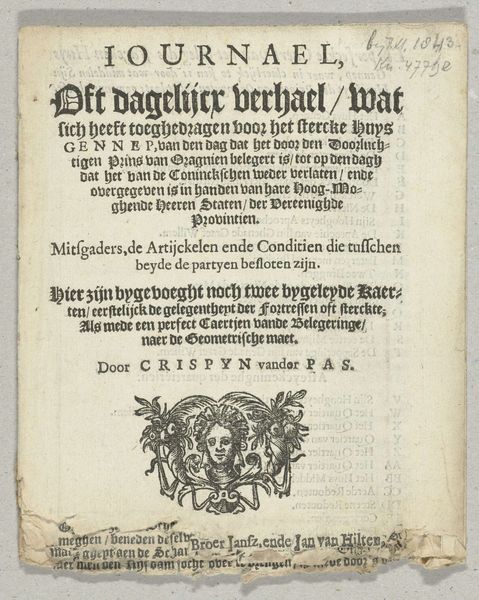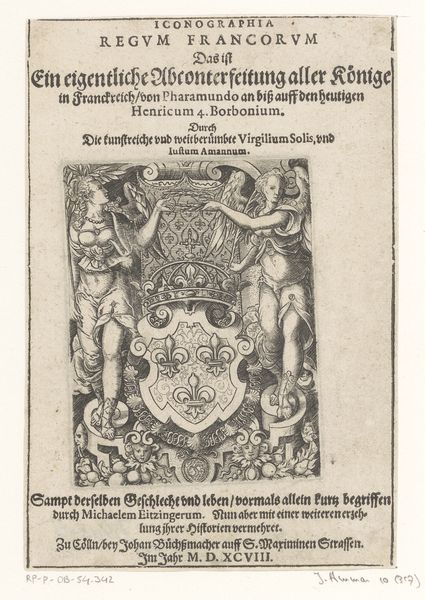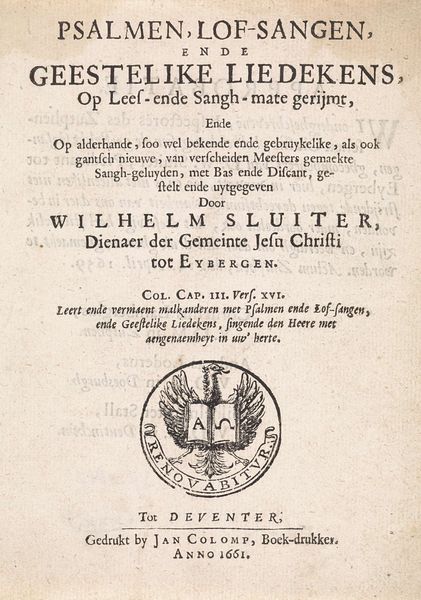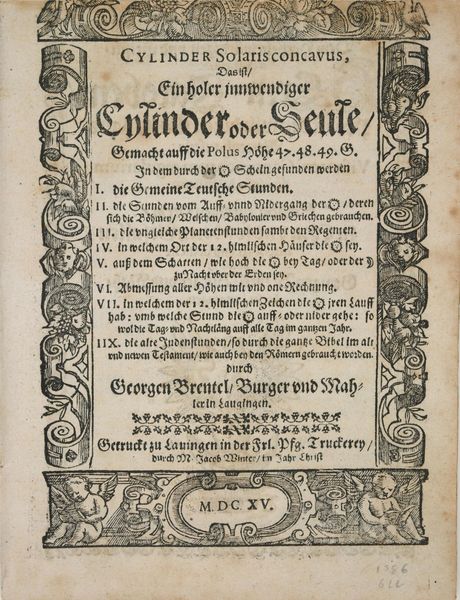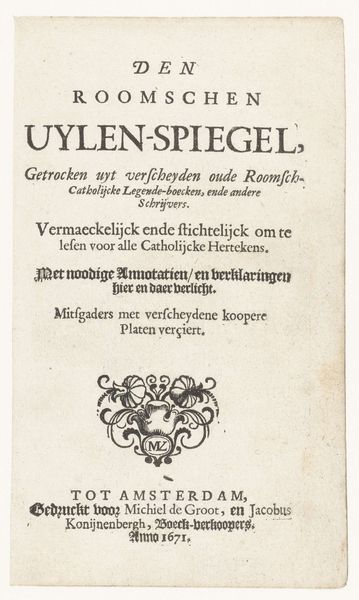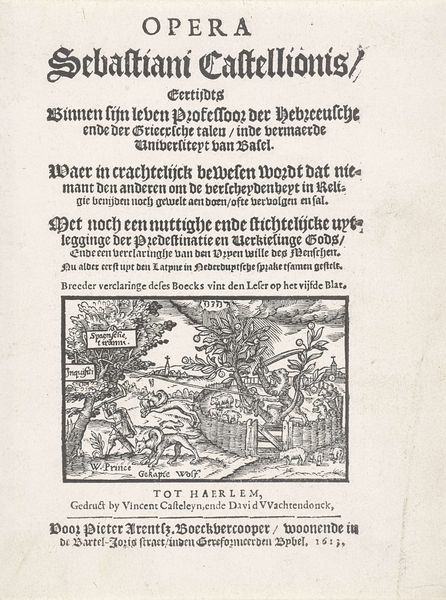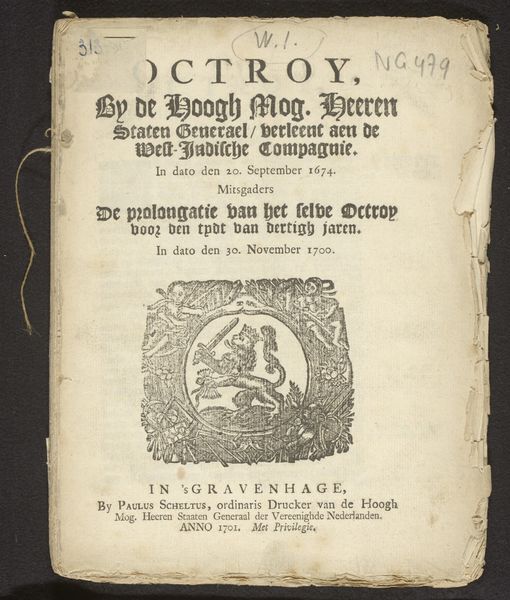
Titelpagina van: J.B. Houwaert, Sommare beschrijvinghe vade triumphelijcke Incomst van den doorluchtighen ende hooghgheboren /Aerts-hertoge Matthias binnen die Prinelijcke stadt van Brussele, 1579 1579
0:00
0:00
graphic-art, print, woodcut, engraving
#
graphic-art
#
dutch-golden-age
# print
#
coloured pencil
#
woodcut
#
watercolour illustration
#
engraving
Dimensions: height 181 mm, width 135 mm
Copyright: Rijks Museum: Open Domain
Curator: Hello, welcome to the Rijksmuseum. I'm delighted to discuss this artwork with you today. Editor: Thank you! We are looking at the title page from J.B. Houwaert's book, "Sommare beschrijvinghe...", created in 1579. It depicts the triumphant entry of Archduke Matthias into Brussels. The print incorporates woodcut and engraving, with some later watercolor additions. I am immediately struck by how dense the text and imagery are, all packed together! What do you see in this piece? Curator: Beyond its aesthetic qualities, I view this piece as a fascinating artifact reflecting the tumultuous politics of the late 16th century. Matthias's entry into Brussels was symbolic, marking a moment of potential unity against Spanish rule during the Dutch Revolt. Consider the context: Brussels was a hotbed of religious and political tension. The image isn't just a record of a celebration, but also propaganda. Who do you think was the intended audience, and how might they have reacted? Editor: I imagine the target audience was the politically engaged citizenry of Brussels. Given the context of the revolt, maybe the intention was to build momentum and support for Matthias’ leadership? Curator: Precisely. And how does the visual language of the print reinforce this? Notice the symbolic imagery used to portray Matthias as a strong and divinely favored leader. The triumphant entry, celebrated within the frame, emphasizes concepts of power and authority, but do you notice any subtle indications of instability? Perhaps anything within the decoration or printing itself? Editor: I see. The seemingly ornate borders around the central image now seem deliberate in their intention to project a sense of power and stability that might not entirely reflect reality. Considering the printing quality too, it feels quite detailed and elaborate for a mass publication from that period. Curator: Absolutely. And keep in mind how prints like these circulated and influenced public opinion in a time before widespread literacy and photography. It brings us to the core of understanding art as both aesthetic object and political instrument. What lasting thoughts does this analysis leave you with? Editor: I am walking away with the idea of prints like this being vital tools for disseminating very specific political agendas during pivotal times. I’ll never see early printed images quite the same way. Thank you! Curator: A fitting conclusion! My pleasure.
Comments
No comments
Be the first to comment and join the conversation on the ultimate creative platform.
